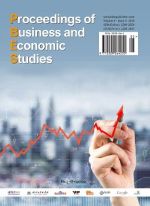Abstract
This study examines the bidirectional shaping mechanism between short-video algorithms and film narratives within the attention economy. It investigates how algorithmic logic influences cinematic storytelling and how films, in turn, contribute to the aesthetic enhancement of short-video content. Drawing on Communication Accommodation Theory and Berry’s Acculturation Theory, along with case analyses and industry data, this research demonstrates that algorithms push films toward high-stimulus, fast-paced narrative patterns—characterized by increased shot density and structural fragmentation—to capture and retain viewer attention. Conversely, films counter this influence by supplying narratively deep and artistically refined content that elevates short-video aesthetics and encourages critical audience engagement. This dynamic reflects a process of mutual adaptation rather than one-sided dominance. The study concludes that such interaction signifies a broader restructuring of cultural production logic, facilitating cross-media convergence while simultaneously posing risks to cultural diversity due to the prioritization of high-traffic content. Balancing this relationship will require policy support, algorithmic transparency, and strengthened industry self-regulation to preserve artistic integrity and cultural ecosystem diversity.
References
Liu L, Xie J, Zhang W, 2020, Research Status, Context and Application of Communication Accommodation Theory: Bibliometric and Content Analysis based on WOS. News and Communication Review, 73(01): 47–61.
Xiao J, Li J, 2018, Interpretation, Progress and Trends of Cross-cultural Adaptation Research: An Interview with Professor John Berry, the founder of Cultural Adaptation Theory. News & Communication Research, 2018(01): 148–152.
Bordwell D, 2022, Film Narratology, Peking University Press, Beijing, 89–102.
Second Hand System, 2023, 2023 Short Video Attention Report, Second Hand System Research Institute, Beijing.
Peng L, 2023, New Media User Research: Nodeized, Mediated, Cyborg People, Renmin University of China Press, Beijing, 156–178.
China Film Association, 2025, Nearly 500 Popular Film Images Analysis Report, China Film Association, Beijing.
Sun S, 2022, Cross-cultural Adaptation Theory from a Paradigm Perspective, dissertation, Zhejiang University.
National Film Administration, 2024, Film Industry Report 2024, National Film Administration, Beijing.
Xiao J, Li J, 2014, Seeking Universal Laws in Cultural Adaptation, Social Science News, May 22, 2014, (005).
Yang Q, 2024, A Comprehensive Interpretation of Smythe’s Audience Product Theory. Journal of Wuhan University of Technology (Social Sciences Edition), 37(05): 74–80 + 110.
